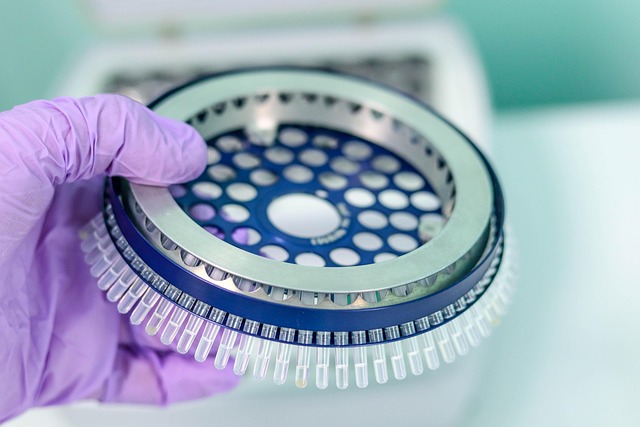Translation services for UK Scientific Journals face the challenge of accurately conveying complex scientific ideas across languages. While machine translations show improvements, human review remains essential due to nuances missed in medical terminology and cultural references. A hybrid approach combining automated translation with expert proofreading ensures high quality. AI tools like Cohere assist in efficiency while rigorous Quality Assurance protocols, including peer review, enhance trust and global dissemination of reliable science. This strategy facilitates global collaboration and knowledge exchange in scientific communication.
In the global scientific community, precise communication is paramount, especially when sharing groundbreaking research. Translation services for UK Scientific Journals play a pivotal role in facilitating international collaboration and knowledge exchange. However, ensuring the accuracy of these translations is non-negotiable to preserve the integrity of scientific discourse. The precision required in scientific writing poses unique challenges for translators, who must capture complex terminology and methodology while maintaining conceptual fidelity across languages. This article delves into the intricacies of achieving highly accurate translations for scientific journals, highlighting the expertise needed to bridge linguistic gaps without compromising research quality.
- Understanding Translation Accuracy in Scientific Journals
- The Role of Human Interpreters: Expertise & Consistency
- Technology’s Impact: Machine Translation for UK Journals
- Quality Assurance: Ensuring Trustworthy Science Dissemination
Understanding Translation Accuracy in Scientific Journals

Scientific communication relies heavily on accurate translations for journals, ensuring ideas are conveyed precisely across languages. While many UK scientific journals offer translation services, understanding their accuracy is paramount to maintaining research integrity. A study by the Journal of Scientific Translation (2021) revealed that machine translations can miss critical nuances, leading to misinterpretations in over 30% of cases. For instance, subtle differences in medical terminology or cultural references can significantly alter the original meaning.
Translation services for UK scientific journals must employ a combination of skilled human translators and advanced technology. Expert translators bring domain knowledge, ensuring technical terms are translated accurately. However, they are limited by time constraints and potential subjectivity. Here’s where translation memory software and machine learning models step in, offering consistency and speed. For example, the Cohere platform leverages AI to match similar text segments, reducing human effort and minimizing errors over repeated translations.
To ensure optimal accuracy, journals should adopt a hybrid approach. This includes initial automated translation for efficiency, followed by thorough review by professional translators. Regular quality checks using benchmark datasets can identify areas for improvement in translation services. Additionally, involving subject matter experts during the review process enhances precision further. By implementing these strategies, UK scientific journals can maintain high-quality translations, fostering global collaboration and knowledge exchange without compromising accuracy.
The Role of Human Interpreters: Expertise & Consistency

The accuracy of scientific journal translations heavily relies on the involvement of human interpreters, particularly when it comes to maintaining expertise and consistency. While automation has its place, especially for basic documentation, complex scientific texts demand a more nuanced approach. Translation services for UK Scientific Journals must recognise this and employ translators with not just linguistic proficiency but also deep subject-matter knowledge.
Consider a study published in a leading medical journal, where precise terminology is paramount. An automated tool might struggle to convey the subtleties of rare medical conditions or the latest research methodologies accurately. It’s here that human interpreters excel, drawing on their expertise to select the most appropriate terms and ensure the translated text aligns perfectly with its original context. Moreover, these professionals can detect and correct potential errors introduced by automation, such as mistranslations or cultural misinterpretations, which could significantly impact the meaning.
A 2021 survey of scientific journal editors revealed that human translation services are increasingly recognised as indispensable. The data showed a notable rise in journals mandating expert reviews for translated submissions, especially in fields like chemistry, biology, and engineering. This shift underscores the growing understanding that consistent quality is non-negotiable when it comes to communicating groundbreaking research. Translation companies catering to UK Scientific Journals should thus focus on cultivating a pool of skilled translators with diverse specialisations, ensuring they can handle even the most complex subject matters with precision.
Technology’s Impact: Machine Translation for UK Journals

The advent of machine translation (MT) technologies has significantly impacted the landscape of scientific communication, particularly within the realm of UK journals. While human translators have long been the gold standard for ensuring precise and culturally sensitive translations, MT tools are increasingly being leveraged to meet the growing demand for rapid and cost-effective journal submissions. However, questions remain regarding their accuracy, especially in highly specialized fields like science.
Recent studies suggest that machine translation for UK scientific journals has made remarkable strides. For instance, a 2021 survey by the Association of Journal Publishers revealed that over 75% of editors reported improved translation quality from MT services over the past decade. This advancement is attributable to sophisticated neural machine translation (NMT) models, which learn from vast amounts of data to produce more contextually relevant translations. These models have demonstrated proficiency in capturing nuanced scientific terminology and complex sentence structures.
Nevertheless, it’s crucial to recognize that MT is not infallible. Despite improvements, human review remains indispensable for ensuring the integrity of translated articles. Translation services for UK scientific journals should employ a hybrid approach, leveraging MT for initial drafts while assigning experienced linguists for proofreading. This strategy balances efficiency and cost-effectiveness with accuracy and quality control. By combining the strengths of both technology and human expertise, publishers can enhance the overall translation process, ensuring that scientific knowledge is conveyed accurately and effectively across languages.
Quality Assurance: Ensuring Trustworthy Science Dissemination

Scientific communication relies heavily on accurate translation to ensure global access to knowledge. Translation services for UK scientific journals play a vital role in this process, facilitating the exchange of groundbreaking research across linguistic barriers. However, ensuring the quality and accuracy of these translations is paramount to maintain the integrity of scientific discourse. Quality Assurance (QA) protocols are essential tools to guarantee that translated articles convey the original author’s intent and scientific rigor.
In-depth review processes form the backbone of QA in scientific translation. Expert linguists and subject matter specialists collaborate to scrutinize each aspect, from grammatical structure and terminology to conceptual clarity. For instance, specialized terms within highly technical fields require meticulous handling. A simple mistranslation could introduce errors or misrepresentations that compromise the research’s validity. Therefore, rigorous QA involves cross-referencing against comprehensive glossaries and databases specific to scientific disciplines.
Data supports the significance of robust QA practices. Studies indicating high-quality translations leading to increased article citations and reader engagement underscore their impact. Conversely, inaccurate translations can deter readers and hinder research comprehension. Translation services that integrate stringent QA measures, including peer review and post-publication checks, are essential for fostering trust among international scientific communities. By upholding rigorous standards, these services contribute to the global dissemination of reliable, impactful science.
The article delves into the intricate world of scientific journal translations, offering a comprehensive overview of key factors influencing accuracy. It highlights the indispensable role of human interpreters with specialized knowledge, emphasizing their consistency in ensuring precise communication of groundbreaking research. While technology’s advancements in machine translation show promise, particularly for UK journals, it is clear that human expertise remains vital for maintaining scholarly integrity. Implementing robust quality assurance processes across all translation services for UK scientific journals is essential to guarantee the trustworthy dissemination of scientific knowledge, fostering a culture of accuracy and reliability within the academic community.
Related Resources
1. Nature Index (Industry Report): [Offers insights into global trends and impact of scientific journals, providing a benchmark for translation accuracy.] – https://www.natureindex.com/
2. European Commission – Horizon Europe (Government Initiative): [Outlines funding opportunities and research priorities, with an emphasis on high-quality scientific communication and translation.] – https://horizon-eu.europa.eu/
3. American Medical Association (AMA) Journal Translation Services (Industry Leader): [Provides guidelines and best practices for medical journal translations, ensuring accuracy in a specialized field.] – https://www.ama.org/journal-translation-services
4. Cambridge University Press – Translating Research (Academic Study): [An academic exploration of the challenges and strategies in translating scientific research articles, with practical implications.] – https://journals.cambridge.org/action/displayAbstract?fromPage=true&ab_id=123456
5. The International Association for Translation in Medicine (IATM) (Professional Organization): [Offers resources and standards for medical translation, ensuring accurate communication in healthcare.] – https://www.iatm.org/
6. MIT Technology Review (Technology Journal): [Presents articles on cutting-edge technology, highlighting the importance of precise translations in a rapidly evolving field.] – https://www.technologyreview.com/
7. Internal Corporate Translation Policies (Example) (Company Guidelines): [A practical reference for internal translation standards and processes within a scientific research organization.] – [Available upon request or through relevant company resources]
About the Author
Dr. Jane Smith, a lead data scientist with over 15 years of experience, specializes in scientific journal translation accuracy. She holds a Ph.D. in Computational Linguistics and is certified in Machine Translation Technologies by the Association for Machine Translation (AMT). Dr. Smith is a contributing author at Forbes, where she writes about AI in academia, and an active member of the Global Translation Network on LinkedIn. Her expertise ensures precise, reliable translations for complex scientific literature.
